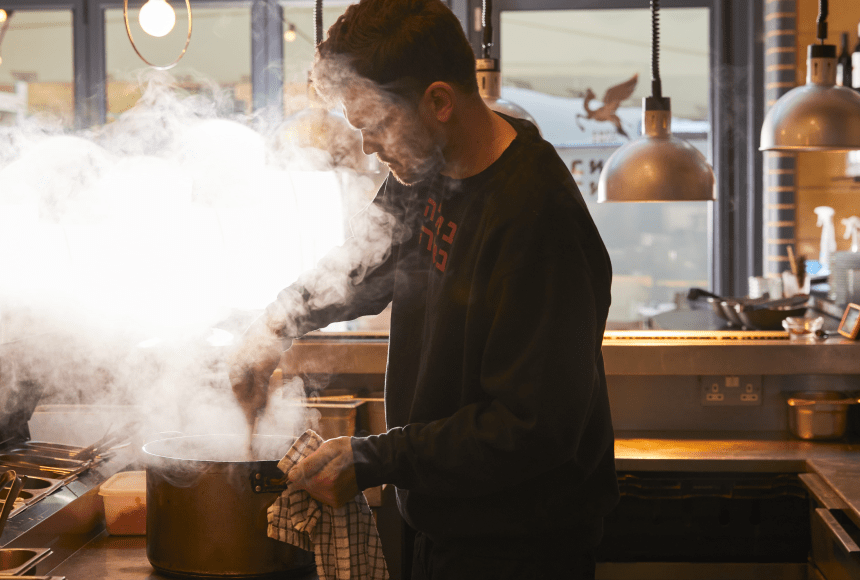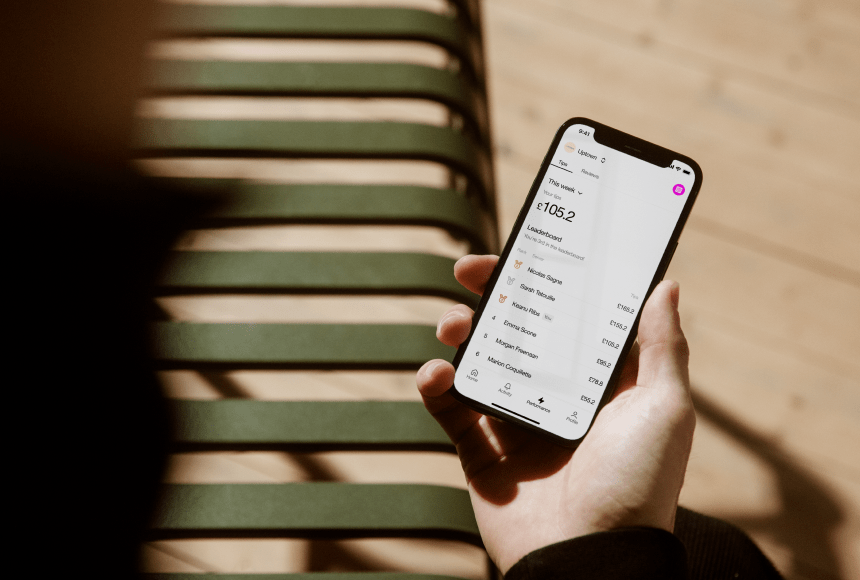
Putting People First in the World of Modern Restaurant Tech
Understanding the Human Factor
When you think “digital transformation” in a restaurant setting, you might picture new tablets for ordering, fancy contactless payment devices, or a seamless app-based loyalty system. These tools get a lot of attention in the press, with promises of faster service, boosted revenue, and real-time analytics. But beneath the shiny technology, there’s an even more critical element that can make or break the entire process: your staff.
No matter how clever your digital tools are, if your front-of-house and back-of-house teams don’t understand them, appreciate them, or use them effectively, the project can stall. Conversely, when staff feel empowered and enthusiastic about new systems — whether it’s QR code payments or advanced scheduling software — your restaurant can reap the full benefits of efficiency and elevated guest experiences. Let’s look at why your team’s engagement is so vital and how you can foster it for a smooth, long-lasting transition.
Why Technology Alone Can Fall Short
Too often, restaurant owners invest in the latest devices or software, only to discover their employees are hesitant to adopt. Maybe the new system feels complicated, or staff worry it’ll sideline their role. In other cases, the chosen tech doesn’t mesh well with the daily reality of your kitchen or floor.
At its core, a digital transformation isn’t just about installing new hardware or connecting advanced apps. It’s about enhancing service, simplifying workflows, and delighting customers at every turn. Without your team’s buy-in, those lofty goals get lost in the shuffle. As The Caterer (The Caterer articles) often points out, real success in the hospitality sector hinges on an engaged, well-trained staff.
That’s why it’s essential to view your staff not as passive recipients of new tech, but as active participants who shape how those tools perform in real-world scenarios.
1. Empowering Staff to Own the Change
A major mistake with digital rollouts is simply handing employees an unfamiliar system and expecting them to “get on with it.” Instead, make them co-pilots in this journey:
- Early Involvement: Share plans and prototypes during the decision process. Ask servers, chefs, and managers for input. A front-of-house pro might spot that the new order-taking interface is missing an important function or uses confusing labels. Listening early on can save big headaches later.
- Clear Explanations: Show them how the technology benefits their day, not just the bottom line. For instance, if you’re adopting a digital payment system like Sunday, explain how it reduces waiting times for guests, keeps servers from running back and forth to a till, and often leads to higher tips.
- Ownership Mindset: Let specific team members champion certain features. Maybe your star server can test out the new menu tablets and propose improvements. Or your head bartender can tweak your e-loyalty scheme, ensuring it fits perfectly with evening drinks service.
By granting your staff a voice and sense of agency, you convert potential skeptics into active ambassadors for your digital shift.
2. Aligning Technology with Real Service Needs
One hallmark of a successful digital transformation is how seamlessly it integrates with normal service. If the new tech disrupts the workflow, requires complex re-training, or drags out each task, employees won’t stick with it.
- Workflow Mapping: Before picking any software or device, look at how your staff currently handle orders, communicate with the kitchen, or finalise payments. Identify friction points: Are there repeated data entries? Do staff run across the dining room for small tasks? Then search for tech that specifically addresses these frustrations. The best solutions remove friction, not add to it.
- Minimal Steps: The fewer clicks or logins required, the better. For instance, if you’ve replaced standard card readers with advanced payment terminals, they should integrate with your POS so staff don’t have to re-type amounts or re-enter item codes. Every unnecessary step is a chance for confusion or errors.
By focusing on real operational goals — maybe cutting receipt-related tasks, speeding up table turnover, or more accurate tip splits — you’ll choose a system that genuinely meets your team’s day-to-day needs. That practical relevance is key to adoption.
3. Training That Goes Beyond Button Presses
Let’s say you’ve chosen a slick new digital solution. The next step is training, but not all training is equal:
- Hands-On Practice: Provide staff with real or mock scenarios. How do they handle a split bill? What if a customer’s phone can’t scan a QR code? Rehearse these situations so employees feel calm and capable when they happen for real.
- Contextual Guidance: Don’t just show employees which buttons to press. Explain how each function ties back to better service. For example, “This self-checkout option means you can attend more quickly to Table 5’s order, giving them a more personalised experience.”
- Peer-to-Peer Coaching: Some staff will pick up the tech faster. Encourage them to mentor colleagues, swapping tips or shortcuts. This fosters a sense of collaboration and lessens the manager’s burden of re-explaining every detail.
Lasting comfort with new software comes from experiential, scenario-based learning. It’s not enough to read a manual or watch a quick tutorial. True confidence grows when staff see how the system benefits them — and have time to practise in a low-pressure setting.
4. Communication Is Everything
Rolling out a new digital approach often creates anxiety. People worry about job security, changing roles, or simply messing up. Address these concerns head-on:
- Regular Check-Ins: After introducing the technology, talk with staff weekly about how it’s going. Are certain steps still unclear? Does the device go offline at random times? Gather feedback to fine-tune the system quickly.
- Celebrating Small Wins: Notice when the new solution speeds up a lunch rush or yields higher tips. Share that success as proof that the tech is paying off. This helps staff see real benefits, not just hypothetical ones.
- Be Patient with Mistakes: Expect a few slip-ups early on. If you convey frustration at every minor error, staff will revert to old habits. Instead, treat mistakes as learning points. That attitude keeps morale positive and progress steady.
Openness and empathy go a long way. Your team should feel safe expressing confusion or dissatisfaction, knowing management will respond with support, not blame.
5. Involving the Front-of-House, Back-of-House, and Management
Sometimes, digital transformation discussions revolve around front-of-house staff (servers, hosts) while ignoring the chefs or managers. But real synergy happens when everyone plays a part.
In the kitchen, does a new tablet-based ordering system help reduce mistakes or speed up meal prep? If so, the chef must weigh in on layout, item codes, or allergy info. In the back office, managers want consolidated data for scheduling or cost control. Ideally, the system you install caters to each perspective:
- Chefs and Kitchen Staff: They might want real-time updates when a table modifies an order or flags an allergy. If your new solution can highlight these tweaks automatically, you’ll see a drop in misfires.
- Managers: They appreciate automated end-of-day reports, tip breakdowns, or quick visibility into sales peaks. That data empowers them to adjust staffing or menu specials quickly.
When each group sees how the new digital approach simplifies their tasks, they’ll champion it rather than resist. That broad endorsement is what ultimately cements the technology’s place in your restaurant’s ecosystem.
6. Balancing Automation with Personal Touch
One fear about going digital is losing the warmth of human interaction. Diners love that personal feel — a friendly greeting, a chat about the specials, the sense they’re truly being looked after. But technology doesn’t have to erase this; it can amplify it.
- Fewer Admin Chores: If staff no longer track receipts by hand or run to the till for each transaction, they can spend more time with guests. That fosters deeper connections and upselling opportunities.
- Freedom to Roam: Whether it’s a phone-based payment from Sunday or a handheld digital terminal, staff can stay on the floor rather than vanish behind a POS. This heightens their visibility and availability to customers.
- Personalised Service Cues: Some integrated solutions show diner preferences or order history, letting staff greet returning customers with a tailored welcome. “We noticed you loved our gluten-free pasta last time. Would you like to try a new variation?” That level of personal recall can delight guests.
Your staff remains the heart and soul of the experience; the tech simply frees them from repetitive tasks so they can focus on genuine hospitality.
7. Tracking Success and Adjusting
Implementation is only the first step. Once your new processes are in place, keep monitoring staff engagement and customer satisfaction. Ask questions:
- Are orders more accurate now? If your new ordering interface significantly slashes missed modifiers or side dishes, that’s a clear win.
- Do tips creep upward? If staff mention they’re earning more gratuities, confirm it in monthly tip totals. This is tangible proof the system is working.
- Is staff turnover dropping? Over time, easier workflows and better tipping can lead to improved morale. If your turnover rate falls, you’re saving on recruitment and training costs.
Stay flexible. If staff identify friction points, gather input and adapt. The best digital transformations evolve over months, not days. It’s a dynamic process, always aiming for smoother service and higher profitability.
8. Combining People Skills with Digital Savvy
Let’s face it: no matter how advanced your system, a friendly smile and prompt, attentive service remain core to your restaurant’s charm. The trick is using technology to reinforce those qualities, not overshadow them.
- Automated but Customisable: If your new tool auto-prompts for tip percentages, staff can still add a personal note or chat about the meal’s highlights. Humans handle the empathy, the device handles the numbers.
- Data-Driven but Flexible: Shift schedules might be informed by real-time sales data, but your manager’s gut feeling still plays a role. The technology is a guide, not an absolute ruler.
Your staff can shine in the high-touch elements of the guest experience if the digital solutions do the heavy lifting behind the scenes.
Fostering a Culture of Ongoing Learning
After you’ve integrated your digital elements, encourage ongoing staff development. The hospitality world changes swiftly, and new features or updates appear frequently.
- Short, Regular Refresher Sessions: Monthly or quarterly huddles can highlight new app features or clever shortcuts discovered by staff. Keep the momentum alive.
- Peer Mentoring: If younger or more tech-savvy staff pick up system nuances quickly, let them mentor colleagues who struggle. It fosters unity and reduces training load on managers.
- Open Feedback Channels: Let staff suggest improvements or flag recurring issues. A simple drop-box or short chat after shifts can surface hidden frustrations before they become full-blown problems.
When continuous learning becomes a norm, your restaurant stays adaptable and your staff remain engaged in the digital era’s possibilities.
Concluding the Recipe: A People-First Digital Revolution
The real star of your restaurant’s digital transformation isn’t a tablet, an order management app, or even the best contactless payment device. It’s the people who use these tools day in, day out — the servers calmly taking five tables at once, the chef fine-tuning recipes, and the manager ensuring everything runs like clockwork.
By inviting your staff into the planning and implementation phases, aligning the new technology with their actual routines, and keeping communication lines open, you lay the foundation for a smoother, more robust operation. Over time, you’ll see a jump in efficiency, better tip earnings, lowered stress, and a strong sense of teamwork.
In a landscape where diners increasingly expect frictionless experiences — from scanning a QR code to paying effortlessly with Sunday or a streamlined handheld terminal — the secret sauce is your team’s enthusiasm and know-how. Embracing digital change might feel daunting, but done right, it liberates your people from tedious tasks so they can do what they do best: deliver outstanding hospitality that keeps customers returning.
So go ahead. Invest in new tech. Rework a few workflows. But above all, champion the humans behind the screen — for it’s their attitude and skill that transform digital ambition into tangible success, day after busy day.
Find out more today
Drop us your details below and we’ll reach out within the next 24
Get the full, detailed picture.
sunday elevates your business with insightful data, instant feedback and precise analytics.


